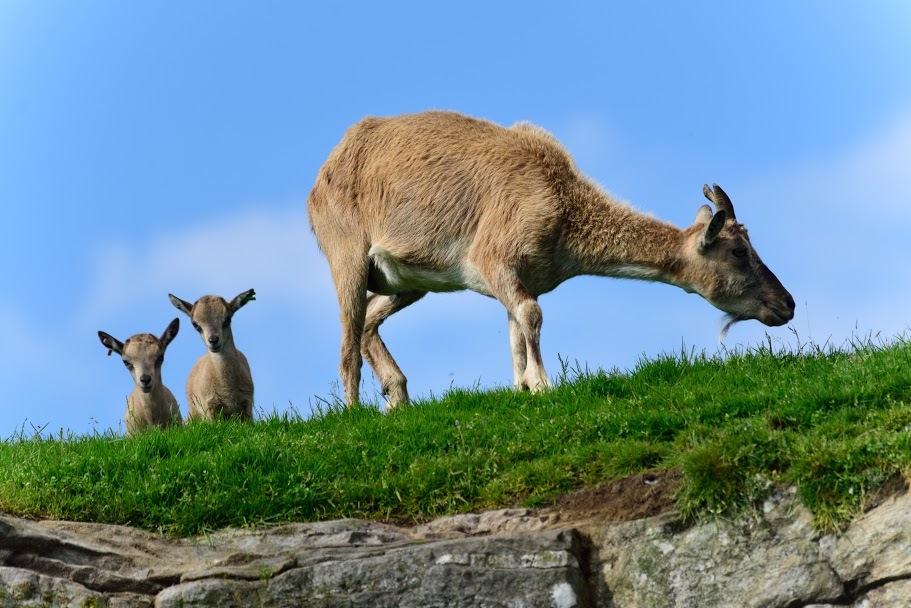The baby boom at the Highland Wildlife Park near Kingussie is continuing, with A baby boom for rare animals is well under way in the Highlands – with a set of twin goats becoming the latest additions.
The Turkmenian markhor kids were born on June 18 and have now made their debut in the main park, ahead of its busiest period.
The new arrivals bring the number of the critically endangered species at the Highland Wildlife Park to 15.
The twins have yet to be named, though they are a male and a female born to mother Nettle.
They follow two older males which were born in May.
Highland Wildlife Park is the only location in the UK which holds the species.
Markhors are a species of wild goat found in the mountains of Afghanistan, Tajikistan and Uzbekistan.
They are one of the most striking goats because of their long spiral horns and impressive beards.
In adult males, the horns can reach more than 60 inches in length, whilst females can grow up to 10 inches.
However, their horns have also caused them to be hunted to the verge of extinction in the wild.
Douglas Richardson, head of animal collections at Highland Wildlife Park, said: “The most important role for any modern zoological institution is to act as a safety net for highly threatened species by managing them in captivity as a buffer against possible extinction in the wild.
“Unfortunately, much of the attention and funding is given to high-profile species such as the tiger and rhino, and it does mean that other lesser known animals, such as the markhor, sometimes don’t receive the attention or resources they deserve.
“This is why we believe it is vital to breed this highly threatened species and why we are delighted at the arrival of the new kids.”
Markhors are listed as critically endangered on the IUCN Red List because of hunting for their prized horns for trophies.
They are also believed to have medicinal qualities are sold widely across the Asian medical market.
The origin of the colloquial name markhor is believed to be derived from the Persian words mar, meaning “snake”, and khor meaning “eater”, which stems from the folklore belief that the markhor has the ability to kill snakes and eat them.
